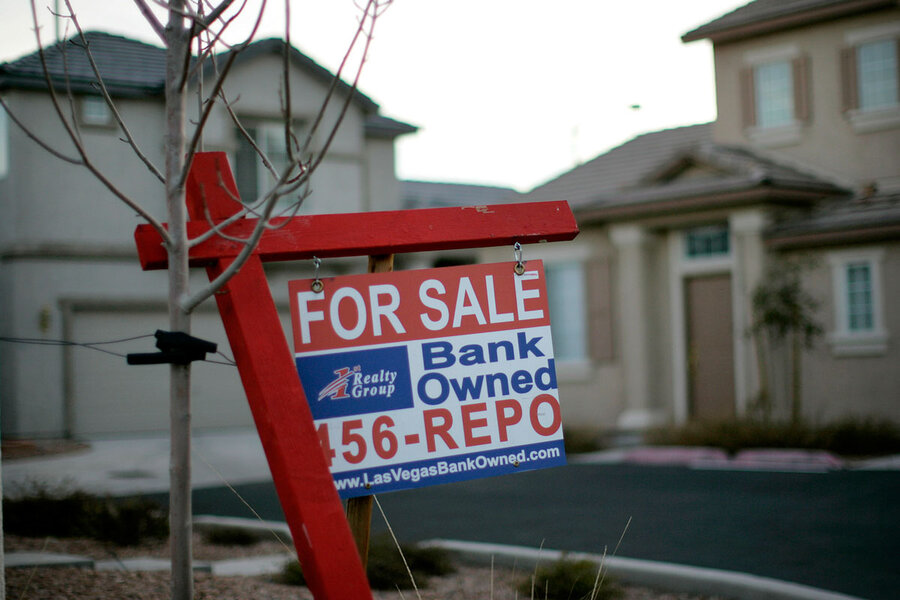US foreclosures hit 10-year low: Sign of solidified recovery?
Loading...
In the latest sign that the US economy is regaining stability following the Great Recession, foreclosures hit a 10-year low in 2016, according to a report released Tuesday.
The number of properties in foreclosure declined 14 percent from 2015, with 933,045 foreclosures filed in 2016, Reuters reports. This is a 70-percent decrease from the peak of the housing crisis in 2009.
The annual report, which was released by ATTOM Data Solutions – the new parent company of RealtyTrac – indicates that only 0.7 percent of all US housing units had at least one foreclosure filling in 2016. Foreclosure filings include default notices, scheduled auctions, and bank repossessions, and were reported on only 717,522 properties in 2006, according to the report.
“The national foreclosure rate stayed within an historically normal range for the third consecutive year in 2016, even as banks continued to clear out legacy foreclosures from the last housing bubble, particularly in the final quarter of the year,” Daren Blomquist, senior vice president of the Irvine, Ca., data company, said in a statement.
The foreclosure rate at the national level has declined steadily since the height of the financial crisis, but several states still struggle with a backlog of legacy foreclosures filed between 2004 and 2008. New Jersey led the way with 32,279 such cases still pending in 2016. New York and Florida follow closely behind with 31,838 and 29,411 respective cases.
Housing experts say New Jersey’s significant backlogs stem from the state’s time-consuming foreclosure process and the state’s weak economic performance since the last recession.
“Jobs and income matter, and New Jersey is losing that battle,” Jeffrey Otteau, president of the Otteau Group told The Wall Street Journal.
New Jersey also had the highest state foreclosure rate from last year, with 1.86 percent of its housing units facing an ambiguous future, which was more than twice the national rate.
Contradicting the national trend is an increase in early stages of foreclosure, which usually begin when owners have missed four mortgage payments, in 15 states. Twenty-one states also experienced more final repossessions. The country had a 16-percent decline from 2015 in both categories.
The District of Columbia saw both early foreclosure and bank repossession go up, while its backlogs also increased.
Back in June 2015, the rate hit a 19-month high – increasing 1 percent to more than 126,000 in May 2015, The Christian Science Monitor reported.
Financial analysts explained at that time that the short-term rise was a signal that banks were finally starting to work through a backlog of homes, calling it “a temporary hiccup.”
Despite the interim hike, foreclosures ended with a three-percent decrease in 2015.
This year’s figures, with new data from December underscoring a 17-percent decline from the same month in 2015, highlights a consistent recovery in the housing market.
“The housing market for the most part has put the housing crisis behind it,” Mr. Blomquist told MarketWatch.








